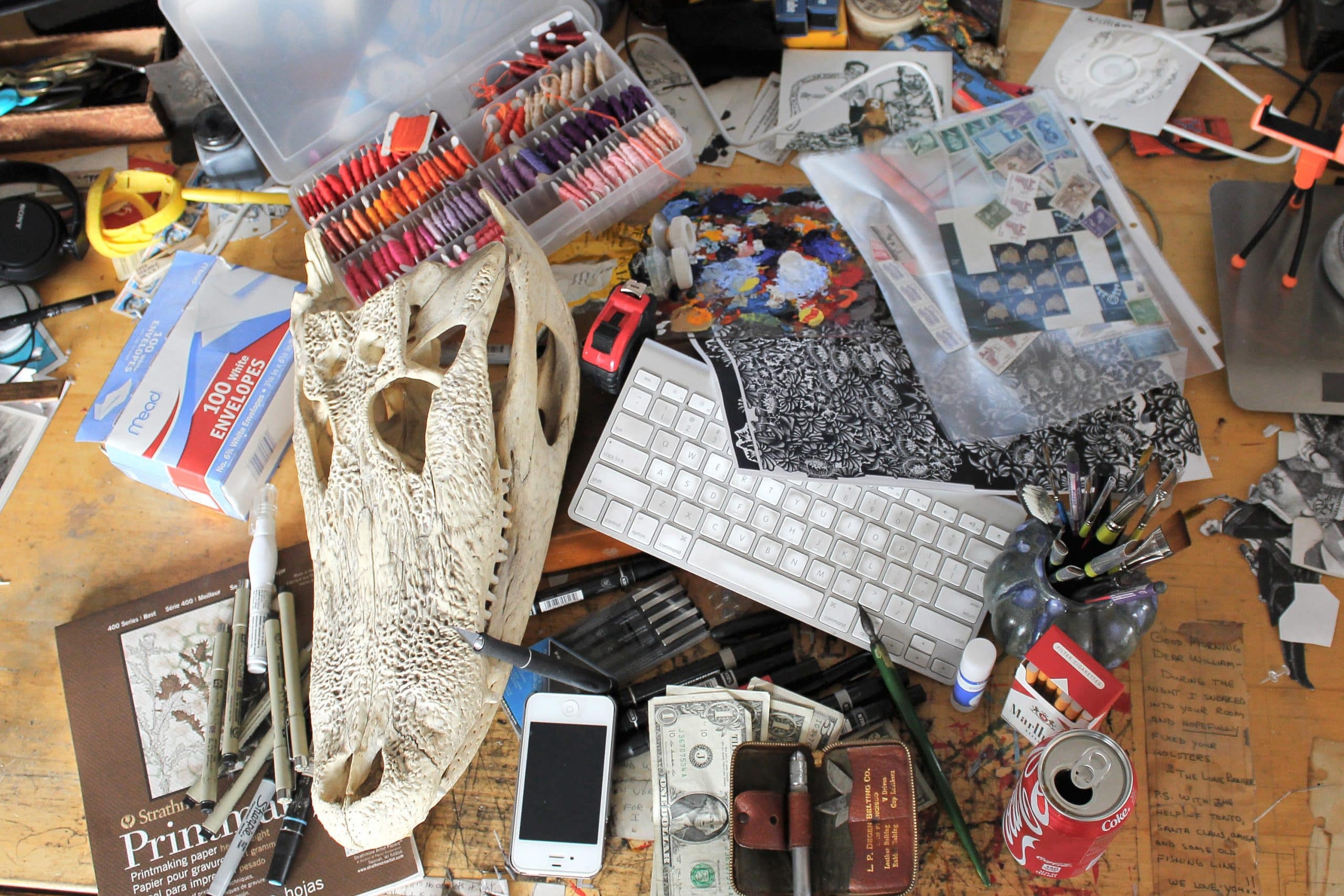Artist William Schaff needs a skull, can of Coke, cigarettes and embroidery thread to make alt-country album cover designs.
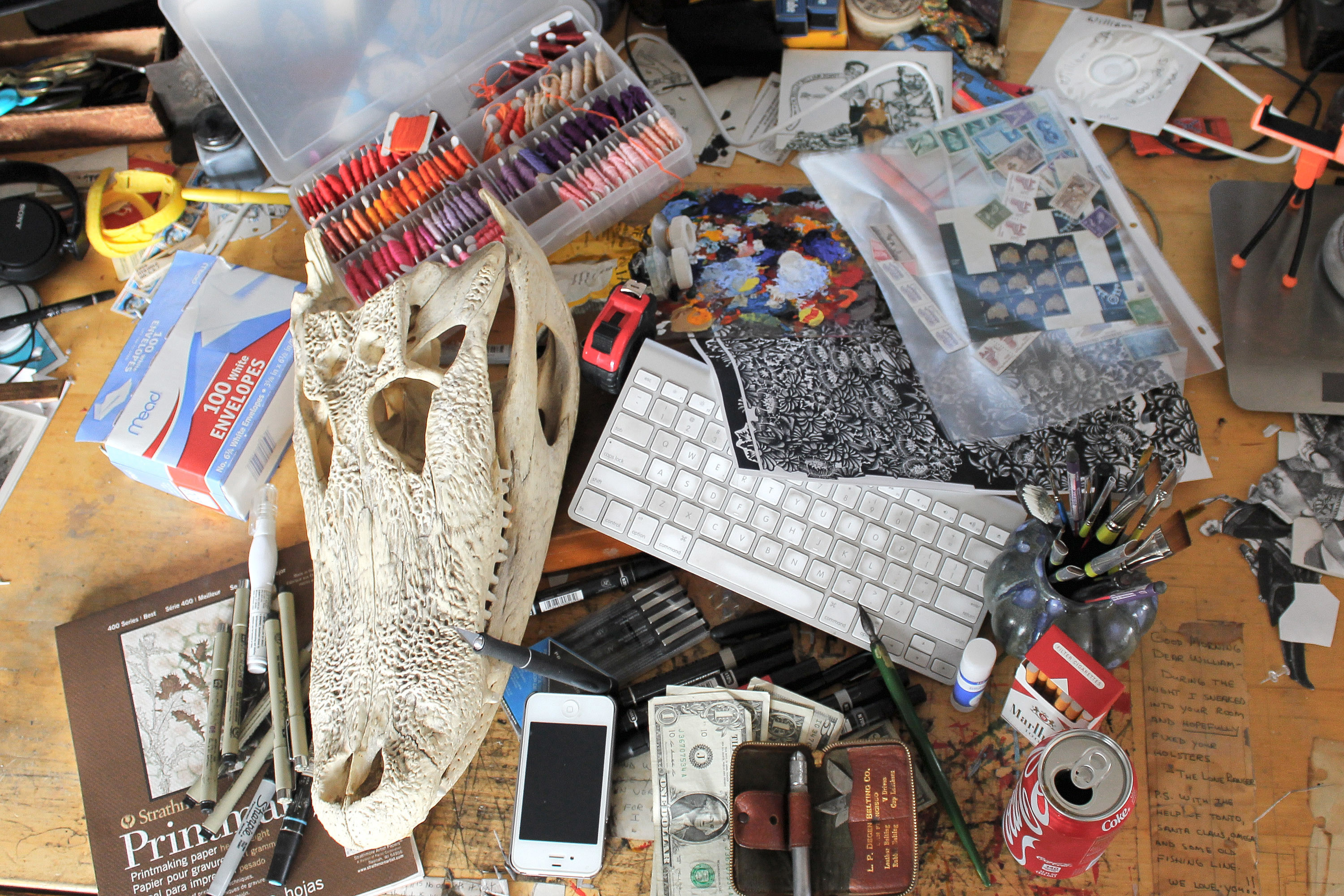
If you’ve ever listened to the bands Songs:Ohia, Okkervil River, or Godspeed You! Black Emperor, there’s an excellent chance you’ve come across artist William Schaff’s work on their album covers.
Schaff’s prolific output spans everything from wood cuts to embroidery and even playing cards. Each piece retains his distinct touch, all of them seemingly from the same sort of spiritual world. That world contains myriad skulls and bones, grotesque human/animal hybrids, warped religious imagery, and written words often pulled from song lyrics of musicians he’s worked with.
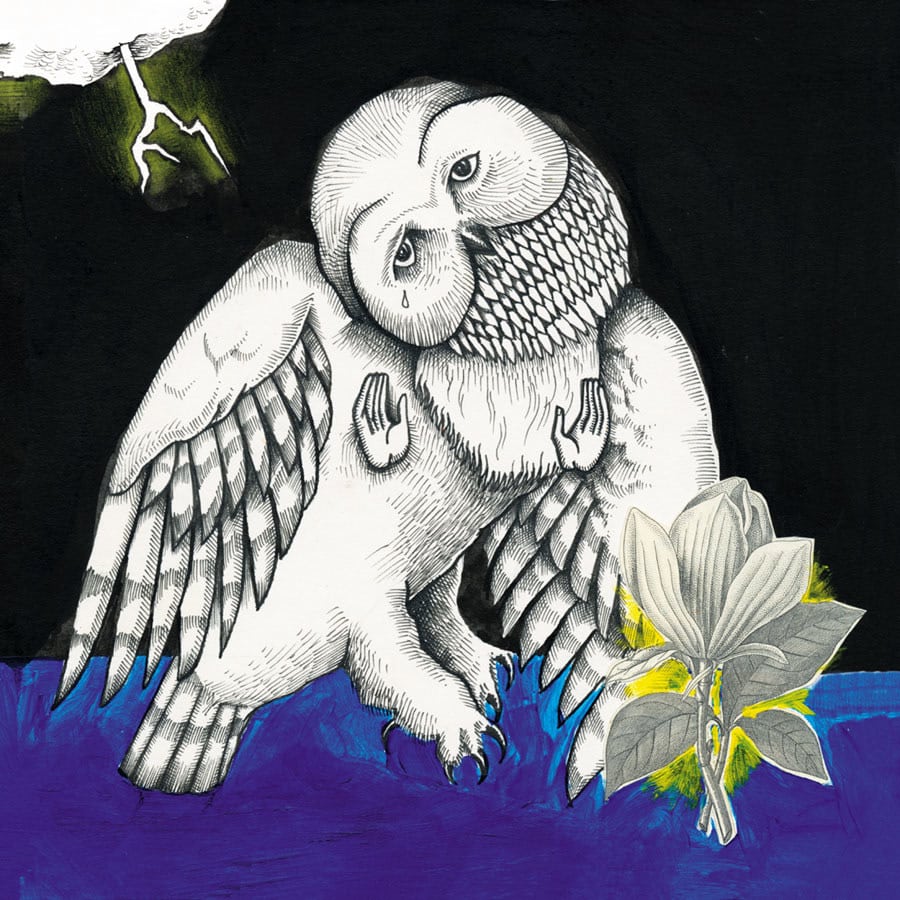
While the term is so often overused or misused, the most apt description of Schaff’s art is haunting: it is instantly memorable, impossible to forget, and prone to opening the floodgates of desire for deeper reflection on its messages.
Schaff currently resides in Rhode Island, where he works in his studio, named Fort Foreclosure. The Fort got its name from the numerous times Schaff has had to bail it out of foreclosure, which eventually culminated in an Indiegogo campaign to not only keep the lights on, but to save his home and a place that has remained an incredible incubator for the arts—from visual art, to music, to podcasts—in its community. The campaign is over, the Fort is still open, and Schaff has a donation page that helps him to keep working.
Schaff’s tools include, but aren’t limited to: skulls (for inspiration and reference), stamps (as parts of his mail art subscription program), and money, which enters into some of his pieces, but one would assume also really helps with obtaining all the other tools.
We spoke to Schaff about his art, using social media to track progress and why death imagery isn’t necessarily morbid.
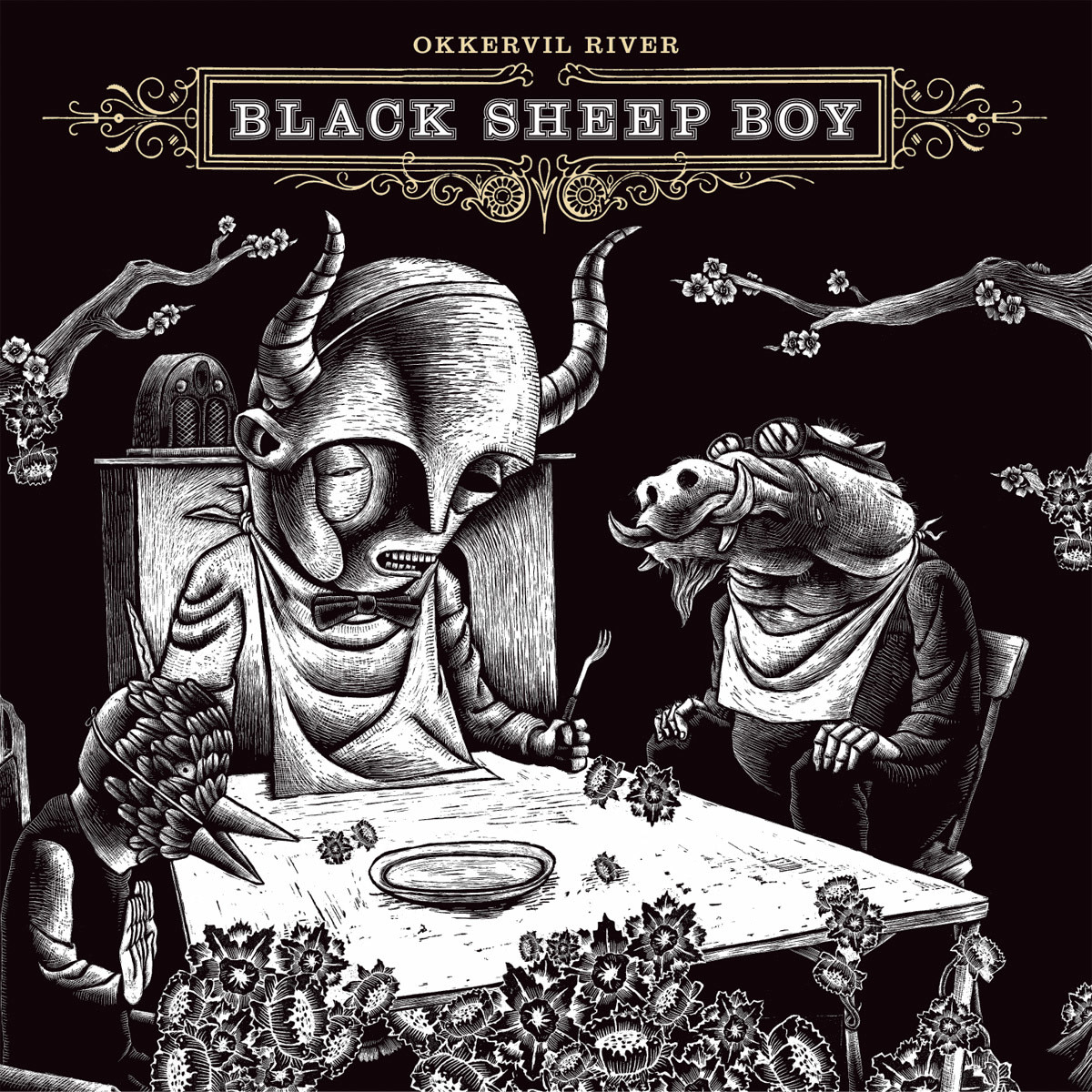
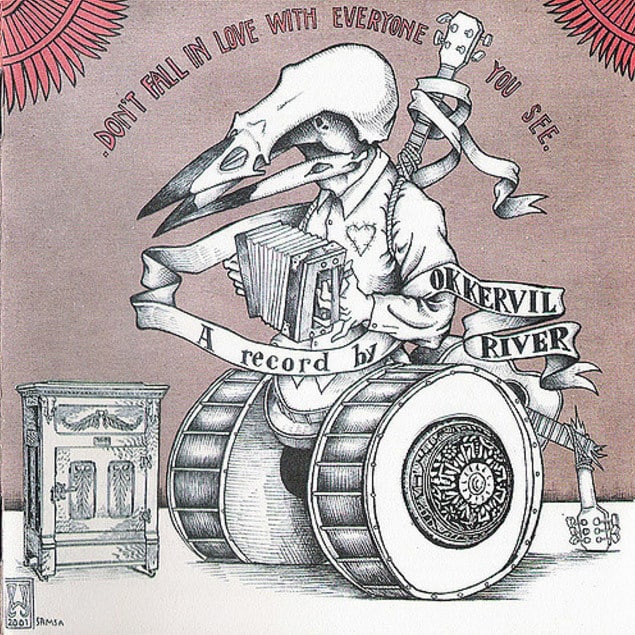
Who are you and what do you make?
My name is William Schaff. I make visual art. Mostly 2D, sometimes 3D works of art.
What are the most important tools of your trade?
Ultimately I would have to say it is the pen and pencil. My training was as a draughtsman, so that’s what I feel most comfortable with. But the list goes on from there: X-Acto knives, embroidery floss, needles, inks, glue, scissors, photocopies of my work for collage, the computer for emails, the iphone for instagram, so on and so forth.
You’re very active on Instagram. How do you feel the app is of use to you?
I post for the folks who follow me on there. I was at first very reticent about not joining when it came out, but there is no denying the importance of social media in helping make this job possible.
So, since I already had a Flickr account, and a Facebook account, I figured with Instagram, I would put more behind-the-scenes shots, something that shows you a side of things you wouldn’t see if you followed me elsewhere.
I’m trying to keep it interesting for those kind enough to take interest and follow the work and its progress.
It can help me to see the stages. It’s also just neat. I never really documented that process in the past, as much as I do now. So I am getting to see a side of my work I never really have before. It’s fun for me, too.
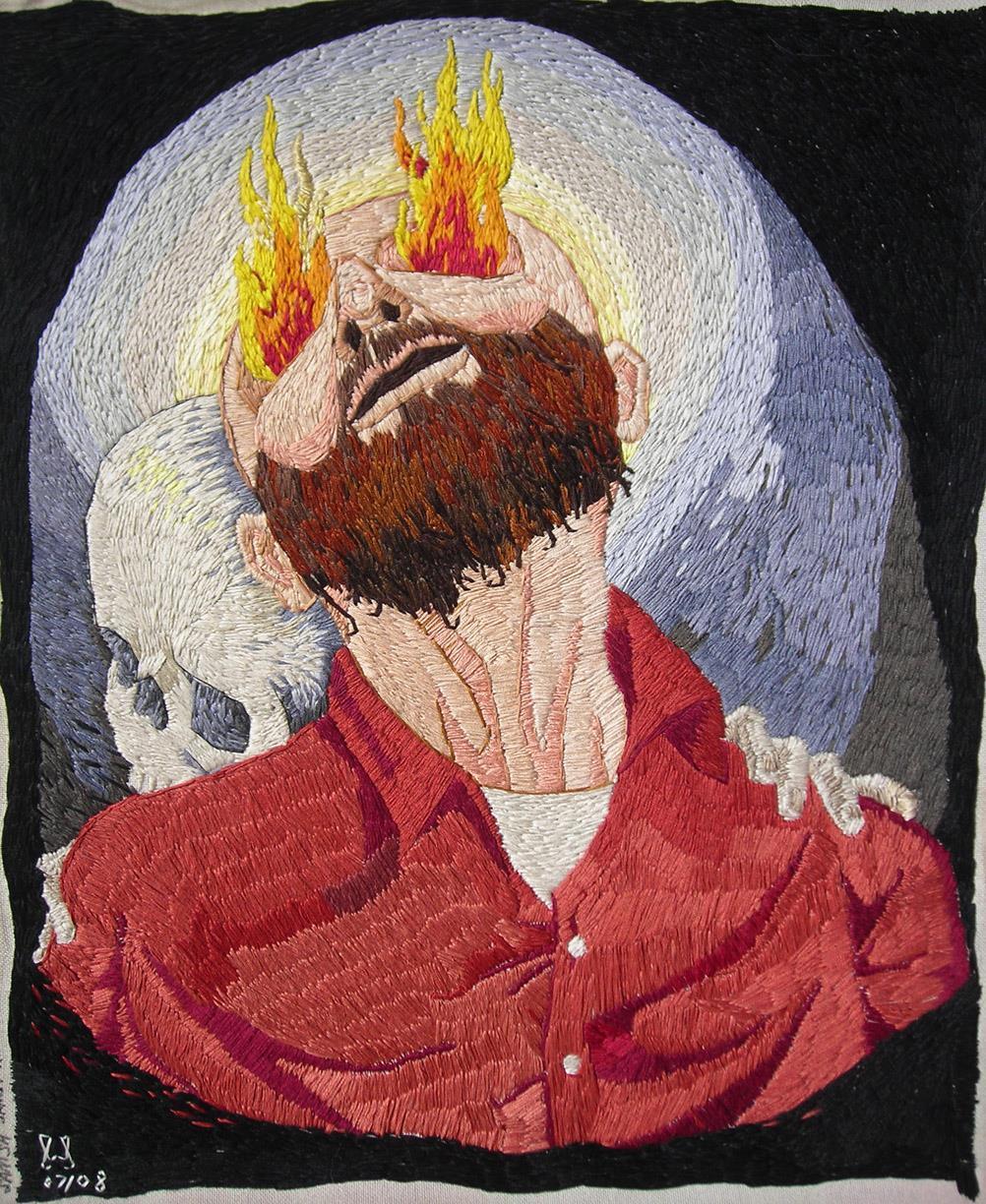
What kind of environment do you need to create in your studio in order to work?
I need the environment I am in to reflect my work in one way or another. I put a lot of time into creating a studio space that inspires me, and reflects the work I am doing.
There are times I work outside of the studio for a change of pace, and those times it is not as necessary to have an environment like that. But, for the most part, existing in a physical manifestation of the work makes more sense to me than not, when creating.
The walls are filled with past works for me to see what I have done right, and what I have done wrong in the past. Books, props, and ephemera surround me, things I can turn to in the moment for whatever reason.
There’s a lot of morbidity in your work. What draws you to death-related images and themes?
I always wince a bit when I hear people describe my work that way. Webster’s offers this as one of the definitions of morbid: “characterized by or appealing to an abnormal and unhealthy interest in disturbing and unpleasant subjects, especially death and disease.”
Death is a part of life. This isn’t a silly, or simplified understanding of a stage in our biological lives, but a fact. With that fact comes the effect death has on us and everything/everyone around us. It permeates things as much as the sun’s rays and the moon’s light. Acknowledging that and examining those often ignored effects doesn’t seem “unhealthy” to me. In fact, I would say the opposite.
As for what draws me to do such imagery, it is that very fact of how entwined it is, and its effect that draws me to it. I see that as much as I see the life’s impact. I try to show both in the work.
I think people are so programmed to believe death is a negative, or how uncomfortable its results make them, that they see my willingness to confront it and exist with it as a morbid thing. I feel it is important.
Fear leads so many people by the nose it seems, and death is a thing people are very scared of. The fear itself becomes a kind of death, in a metaphorical sense. So I try to show that the way Norman Rockwell showed us scenes of everyday life. I just point out where death might be standing in relation to the people in those scenes.
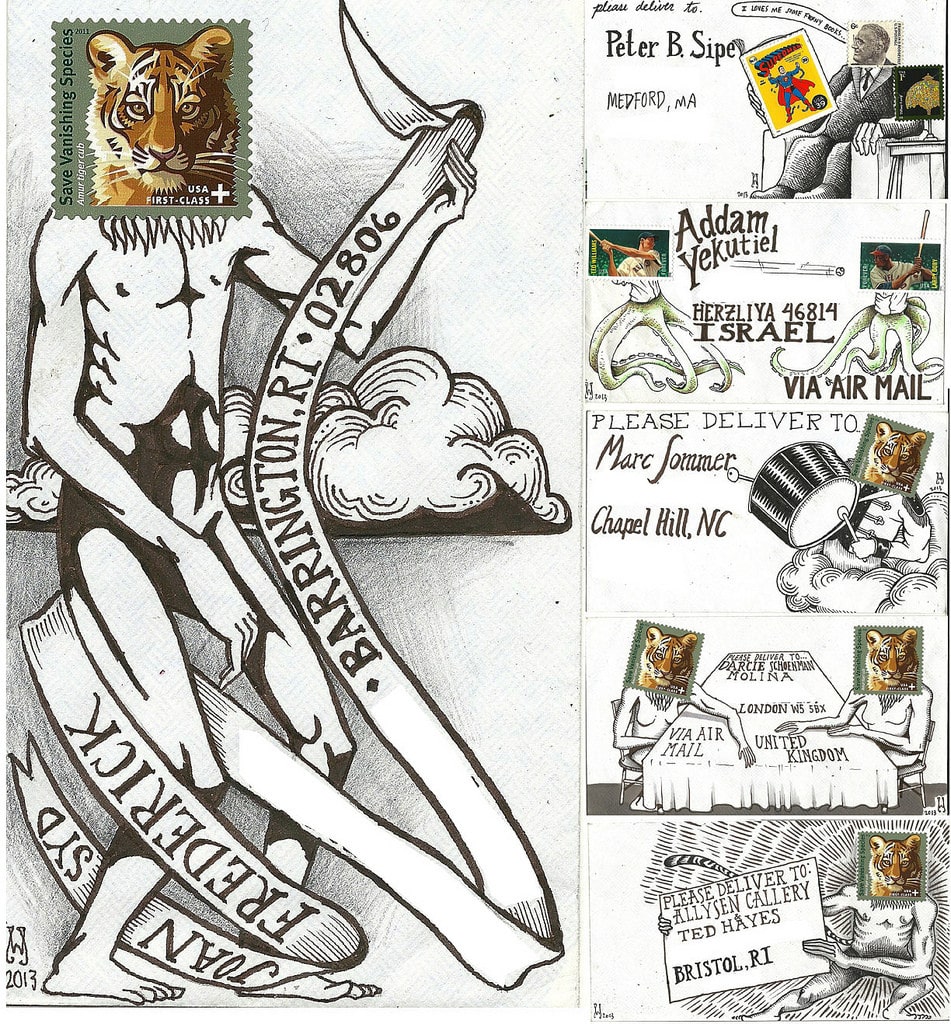
You have a series of work called “Mail Art” that includes elaborately design envelopes. What’s the story behind that project?
I started it almost 20 years ago, back when the internet was super slow due to phone modems. I would be waiting for pages to load, and one day I just started drawing on the envelope for a letter I was sending to a friend.
Over the years it has grown into something I have traded with folks, or offered a sort of subscription, to help me afford living as an artist.
I like seeing what the story is with the part of the stamp’s picture we don’t see, so sometimes I make the stamp a part of the overall image. I also use that portion of the art to be a little sillier than I might in the rest of my work.
@williamschaff
William Schaff Portfolio
